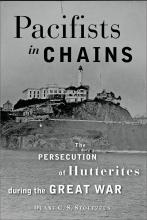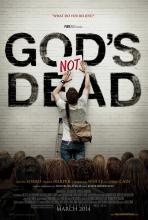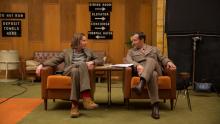Culture





Biblical themes have been used throughout history to share the universal struggle of humanity; temptation, rebellion, coming of age, the degradation of the moral compass, courage in the face of humanity, and of course, faith.
William Shakespeare uses biblical elements in his plays. We witness in his writings themes highlighted in David's narrative, Adam and Eve's story, and Cain and Abel's tragedy. These stories are central to the Western canon. We cannot get away from these themes and stories, for they rest in the consciousness of our culture.
The film Noah, directed by Darren Aronofsky, is a daring, powerful, and imaginative retelling of the Noah story. Aronofsky takes the central elements of the biblical narrative and expands the story, as artists are called to do, to allow the audience to witness, not a historical world, but a metaphorical universe where the choices of humanity disrupt the sacred divine rhythm of creation.
THE CULTURAL explanations and defenses for women undergoing genital mutilation, female infanticide, domestic violence, and other atrocities crumble under the weight of the cross. The involuntary suffering endured by millions of women is not redemptive; it is a suffering borne out of opposition to a God that desires to crush such bondage. An orientation of the cross emphasizes the importance of maintaining a precise language for a Christian perspective and application. According to Gerhard Forde, our modern culture has been so sensitized and psychologized that we are afraid to call a spade a spade. We often act many times “on the assumption that our language must constantly be trimmed so as not to give offense, to stroke the psyche rather than to place it under attack.” Our language can ultimately decline to a type of “greeting-card sentimentality.” Forde claims that when this happens we have lost our theological courage and legitimacy. A theology of the cross provides a paradigm or conceptual framework for a language that always speaks truth to power.
The language and meaning of the cross provide the most relevant and useful foundation for creating a practical social ethic for the work of ending violence against women and girls by identifying oppression, abuse, and violence as sin, and by providing a direction and necessary focus for the church. By using the language of the cross, the church embraces the gravity of violence against women and girls. It is not a “women’s issue” or merely another “social problem.” It is sin that violates the integrity and humanity of God’s creation. The work of Christ on the cross demands that the whole of the church respond to the ongoing evil and sin at work in the world. The power of God can be expressed through this language of the cross.

AS THE U.S. mobilized for World War I, a wave of patriotic fervor and xenophobia swept the country. Anything German was suspect, and those who were German-speaking and refused to fight against Germany were doubly suspect. Resentment and anger were directed at Anabaptist groups; several churches were burned and pastors beaten.
Inevitably, the demands of the state conflicted with the rights of conscience. Christian pacifists who only desired to be true to their beliefs by not serving in the military faced a militarized state that saw them as disloyal and disobedient. There was no legally recognized right to conscientious objection—if drafted, the only alternative for objectors was to go into the military and then refuse to participate.
Hutterite leaders had agreed that their young men would register, but if drafted and required to report for military service, their cooperation would end. They would refuse any orders making them complicit in war. Pacifists in Chains is the story of four young men—David, Michael, and Joseph Hofer, and Jacob Wipf—from the Hutterite colony in Alexandria, S.D., who faced that choice. Duane C.S. Stoltzfus, a professor at Goshen College in Indiana, was given access to previously unpublished letters from these men to their wives and families; the book is built around those letters.
Upon being drafted, the four reported in May 1918 and were sent to Fort Lewis, Wash. When they arrived, they immediately faced the test. Ordered to sign an “enlistment and assignment card” and line up as soldiers, they refused and were taken to the guardhouse. Following a brief court-martial, they were found guilty and sentenced to 20 years. Two weeks later, they were in chains and with armed guards on a train headed south to Alcatraz prison in the San Francisco Bay, then a military “disciplinary barracks.” Once there, they again refused to put on the uniform—in this case a military prison one—and were placed in solitary confinement in “the hole,” a basement dungeon. The cells seeped water and were infested with rats; the men were given bread and water to eat and subjected to beatings.

ANYTIME A PUBLIC figure dies, there are spontaneous vigils, piles of flowers and stuffed toys heaped at the star’s home or in a town square. But these outpourings of public grief aren’t reserved only for the rich and famous. In communities across the country, everyday people hold vigils when a child is abducted or a family murdered in a senselessly random act of violence. Sometimes a prayer is murmured. Often, it’s an opportunity for neighbors to mourn their shared loss.
Getting the message right in public grieving and memorializing hardly demands immense wealth or high-minded, thoughtful analysis. I’m heartened by impromptu candlelight vigils in the rain and messy memorials, because grief isn’t organized or tidy. On vacation in Hawaii last summer, boogie boards jammed in the sand as makeshift headstones seemed to line the Big Island’s Puna Coast, glittering stones and leis assembled at the base of each monument. “Sail away,” one paddleboard inscription read. Beside it, a laminated sheet of photos was tacked to a palm tree. On some of the more menacing lava rock cliffs, where it was clear more than a few had perished trying to catch a deadly wave, entire burial grounds with a dozen granite headstones were lined up, matching benches facing the row of markers.
While those cenotaphs, like the white crosses along desert highways and at urban intersections, could be troubling (so much sadness out in the open), we become more empathetic when we’re forced to slow down, reminded of our mortality and how loss—or even just the threat of impermanence—permeates most of our lives.

From the opening scene to its closing postscript, God’s Not Dead tells a story of persecution and courage, focusing on a young white man named Josh Wheaton (Shane Harper). “Mr. Wheaton,” as he is referred to in various parts of the movie, finds himself in a predicament on the first day of his Philosophy 150 course. In a scene that echoes Rome’s historic persecution of Christians, the powerful intellectual Professor Jeffrey Radisson (Kevin Sorbo) stands before his class of impressionable students and tells them they can skip the section of the course that discusses the existence of god, if each of them signs a piece of paper that says “god is dead.” The professor makes it clear that this proposal is more of a threat when he slowly and emphatically informs his students that the section on god’s existence is where “students have traditionally received their lowest grades of the semester.” This is Mr. Wheaton’s unexpected predicament: can he sign a piece of paper that proclaims god, as a philosophical category and concept, is dead? And if he decides not to sign that paper, can he have the courage to face the consequences?

“Christianity” is often used to manipulate, control, shame, judge, and hurt others. It’s influenced by politics, popularity, wealth, success, pride, hate, fear, selfishness, and a desire for power. The poisoning of our beliefs — or theology — happens subtly, under the pretense of tradition, teaching, education, discipline, authority, respect, and religion.
We often treat theology similar to politics, where our beliefs and doctrines are based on which ones benefit us the most.
We strive to get everything we can from our faith, and this can lead to spiritual narcissism, where we become obsessed with maximizing the benefits for ourselves while withholding them from others.
Rarely do we adhere to — or agree with — theological ideas that benefit someone else more than us. Sacrificing our own comforts for the sake of others is absurd — which leads to a sense of divine favoritism.

I’ll begin by cutting to the chase: Forget most of what you’ve read about Darren Aronofsky’s new film, Noah. It opens Friday. Go see it and decide for yourself.
Having said that, in my opinion Aronofksy’s Noah is a beautiful, powerful, difficult film worthy of the “epic” label. A vivid, visually spectacular reimagining of an ancient story held as sacred by all three Abrahamic religious traditions, it also is the most spiritually nuanced, exquisitely articulated exploration of the ideas of justice and mercy I’ve ever seen on a movie screen.
And despite what you may have heard elsewhere, Noah is deeply, passionately biblical.

Last Sunday in Los Angeles, Cathleen Falsani sat down with Ari Handel, a screenwriter and frequent collaborator with Noah director Darren Aronofsky, with whom he co-wrote the film and the graphic novel, Noah, upon which it was based, to discuss some of the extra-biblical elements of the $150 million movie.
Longtime friends Handel and Aronofsky were suitemates at Harvard University. Before becoming a screenwriter and film producer, Handel was a neuroscientist. He holds a PhD in neurobiology from New York University. He was a producer on Aronofsky’s films Black Swan, The Wrestler, and The Fountain (which he co-wrote with Aronofsky), and had a small role as a Kabbalah scholar in the director’s debut film, 1998’s Pi.
Editor’s Note: The following Q&A contains some spoilers about the film. It has been edited for length.

I tend toward the “eat, drink, and be merry” life philosophy, popularized by the Bible, and also Dave Matthews Band. Growing up in a very large, very loud, very food-centric family in South Texas ingrained this in me, as we gathered many a Sunday around the table(s) to celebrate that month’s birthdays and talk politics, family businesses, and, mostly, the last Seinfeld episode. What you might call gluttony, I call Sabbath — and I’ll quote Scripture at you to prove my point.
So smug was I at my “breaking bread as Jesus did” epicurean lifestyle that I probably should be writing about pride instead. But a few weekends ago, while finishing up season two of House of Cards three days after it released — and also a bottle of Zinfandel — and taking eye-attention breaks to check my Facebook and Instagram feeds (that adorable photo of baby girl only garnered 64 likes?!), and to see how many steps my Fitbit recorded for the day (so much for that post-dinner Skinny Cow), I paused to reflect upon the concept of gluttony.
When does our reliance upon a constant stream of multi-channel entertainment and instant gratification become harmful?
Wrath
Rolling in the Deep — Adele
Mama Said Knock You Out — LL Cool J
Sloth
Lazy Song — Bruno Mars
Je Ne Veux Pas Travailler — Pink Martini
Greed
Rich Girl — Gwen Stefani ft Eve
I Want It All — Queen
Gluttony
Eat It — Weird Al Yankovich
Can’t Stop — Miley Cyrus
Lust
I Want You to Want Me — Letters to Cleo/10 Things I Hate About You soundtrack
I’m Sexy and I Know It — LMFAO
Pride
I’m the Best (clean version) — Nicki Minaj
Devil Went Down To Georgia — Charlie Daniels Band
Envy
Jessie’s Girl — Rick Springfield
Dancing on My Own — Robyn


Editor's Note: Last week, Sojourners’ Associate Web Editor Catherine Woodiwiss caught up with musical collective Gungor at South by Southwest in Austin, Texas. Here’s what Michael Gungor has to say about art, liturgy, and the future of music.
This interview has been edited for length and content.
Catherine: So what brings you to South by Southwest (SXSW)?
Gungor: I guess we thought it was about time to experience the circus.
Catherine: A couple of years ago there was talk of SXSW becoming a destination for "Christian techies,” and Donald Miller premiered his popular film, Blue Like Jazz, at the film portion of the festival. Do you consider yourself part of a Christian “witness” here at SXSW?
Gungor: We are here to make some music, have a good time, and perhaps make some friends along the way. We certainly aren't here to proselytize or advance some secret religious message or anything.
But anywhere we go, we do have a desire to live the sort of life that Jesus invited people to live.

With the release of the movie Noah a couple of weeks away, the waters of controversy are already rising fast. I’ve seen the movie’s final cut, and director Darren Aronofsky’s re-envisioning of the biblical hero Noah will not disappoint — inciting some and enthralling others. Some will undoubtedly chastise him for the ways in which the movie riffs on the biblical account of Noah. Others will praise Aronofsky for his creative vision.
But the big question generated by a film like Noah is: When the Bible is the source of inspiration for art, how close does the artist have to stay to the original narrative? The Bible has been the inspiration for profound works of art for centuries. It isn’t surprising. The Bible is full of passion, romance, intrigue, struggle, and the triumph of good over evil.
Even so, it is hard to ignore the reality that not all art inspired by the Bible is respectful of its subject matter. Where, then, should the line be drawn between artistic interpretation and blatant disrespect?


To my mind, all of Wes Anderson’s films are masterpieces in the truest sense of that word. But his most recent creation, Grand Budapest Hotel, is, perhaps, his chef d’oeuvre.
Anderson’s eighth feature-length film, which opened in limited release last week, Grand Budapest Hotel is a whimsical, hilarious, and surprisingly touching tale laden with nostalgia for a world and way of life most of us (including the 44-year-old director himself) never have experienced.
Set in the fictional Eastern European mountain region known as the “Republic of Zubrowka,” the plot centers around the character and adventures of Monsieur Gustave H. (Ralph Fiennes), the concierge of the eponymous Grand Budapest Hotel, one of Europe’s palatial “grand hotels. Gustave is something of a dandy, a throwback to a bygone era even in his heyday of the 1930s on the cusp of World War II.
)

It was a busy weekend on the eve of Lent for fans of spirited singer and spiritually-minded musician Michael Gungor. If you were not on the Gungor or Michael Gungor Twitter feed over the first two days of March, you might have missed the news about a new band, a new record, and a new mini-tour.
As the band called Gungor takes a short break from touring in support of its sonically and lyrically adventurous album I Am Mountain, the family business has reinvented itself with the proverbial “side project” so common with musical visionaries who cannot contain their creative output to just one brand name or band name.
But The Liturgists — a collective that includes Michael’s wife Lisa, brother David, and a host of other supporting musicians and collaborators — are not just another band, and the brand is “the work of the people.” The band’s Vapor EP is a warm and experimental worship text that includes a song, a spoken-word invocation and incantation, and a guided centering prayer meditation. On the group’s Ash Wednesday-week mini-tour, all the shows are free by RSVP and are not really shows as at all — not as indie-consumers even in the contemporary Christian scene have come to expect.